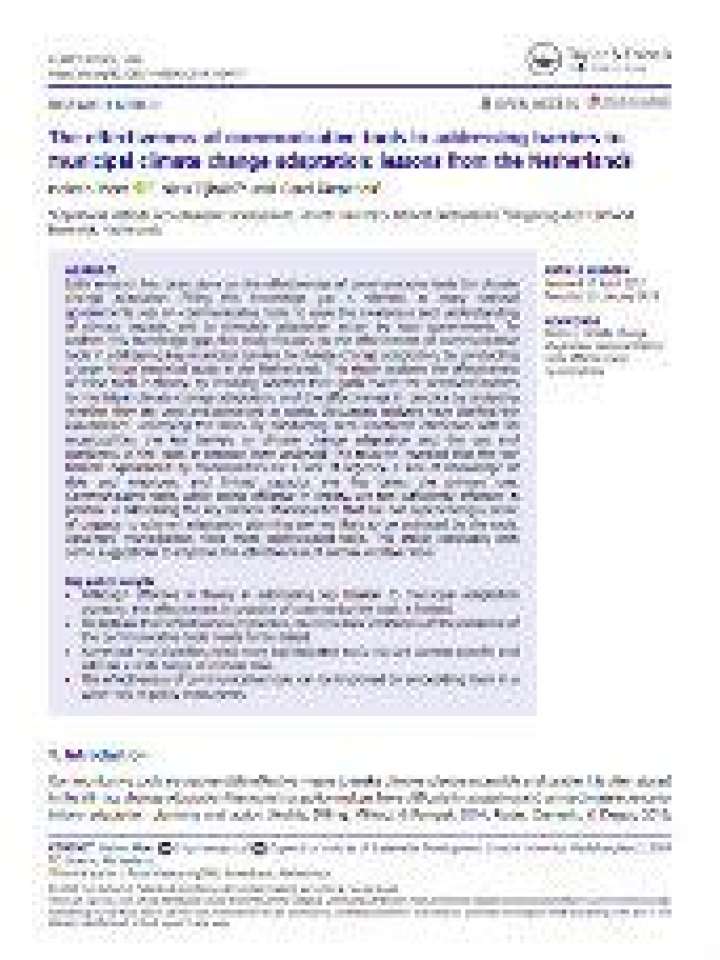The effectiveness of communicative tools in addressing barriers to municipal climate change adaptation: lessons from the Netherlands
This study focuses on the effectiveness of communicative tools in addressing key municipal barriers to climate change adaptation, by conducting a large N-size empirical study in the Netherlands. It addresses the knowledge gap on the effectiveness of communicative tools for climate change adaptation.
This study explores the effectiveness of these tools in theory, by checking whether their goals match the perceived barriers to municipal climate change adaptation, and the effectiveness in practice by analysing whether they are used and perceived as useful. Document analyses have clarified the assumptions underlying the tools. By conducting semi-structured interviews with 84 municipalities the key barriers to climate change adaptation and the use and usefulness of the tools in practice were analysed.
The research revealed that the key barriers experienced by municipalities are a lack of urgency, a lack of knowledge of risks and measures, and limited capacity, the first being the primary one. Communicative tools, while being effective in theory, are not sufficiently effective in practice in addressing the key barriers. Municipalities that are not experiencing a sense of urgency to take on adaptation planning are not likely to be activated by the tools. Advanced municipalities need more sophisticated tools. This article concludes with some suggestions to improve the effectiveness of communicative tools.
Key policy insights
- Although effective in theory in addressing key barriers to municipal adaptation planning, the effectiveness in practice of communicative tools is limited.
- To increase their effectiveness in practice, municipalities’ awareness of the existence of the communicative tools needs to be raised.
- Advanced municipalities need more sophisticated tools that are context-specific and address a wide range of climate risks.
- The effectiveness of communicative tools can be improved by embedding them in a wider mix of policy instruments.
Explore further
